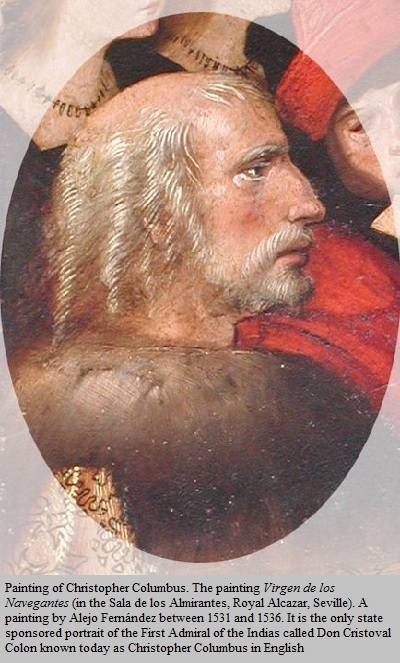

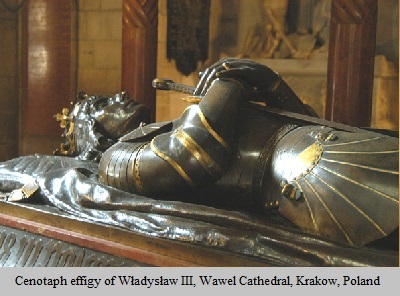

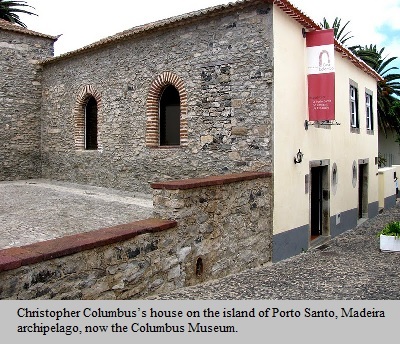
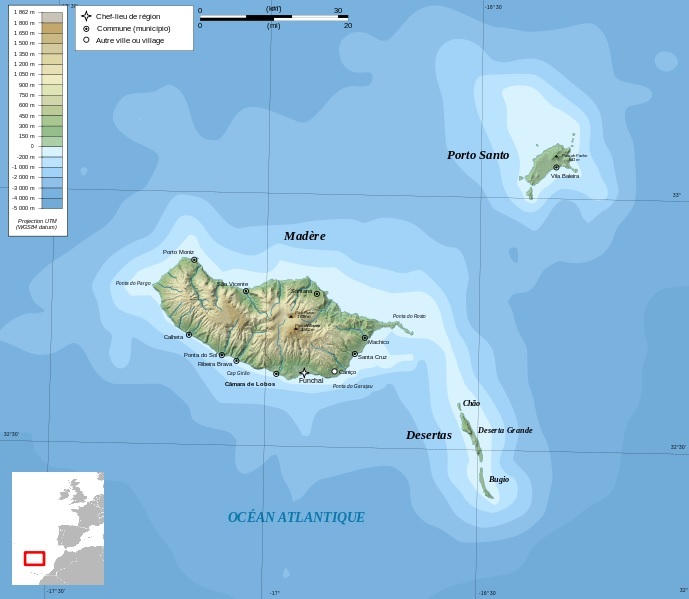


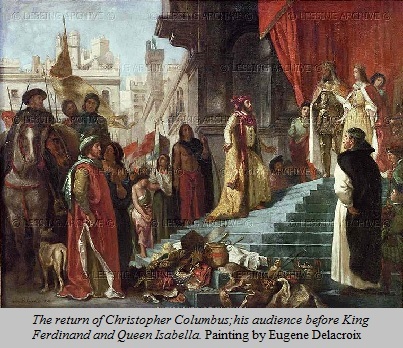
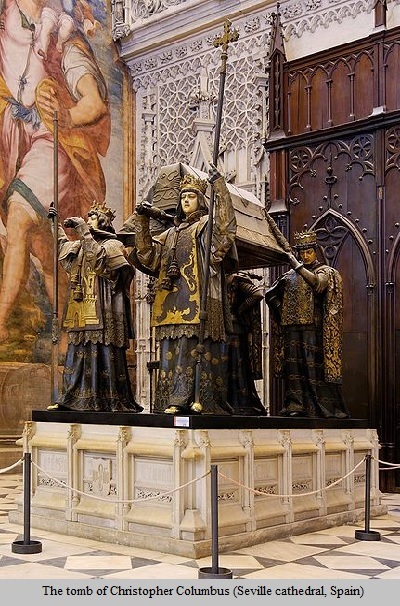

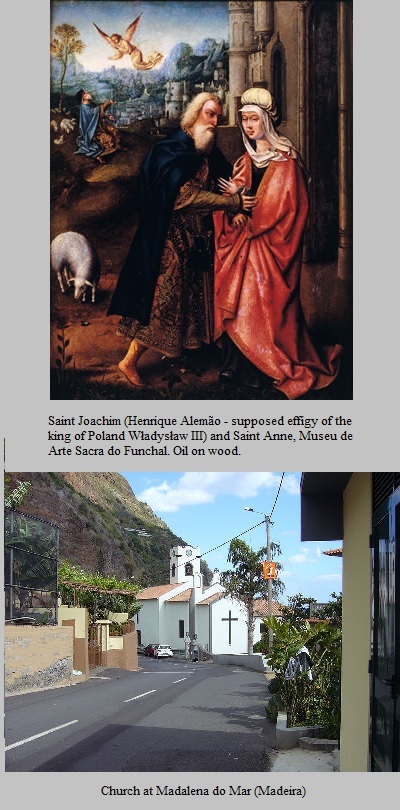
The longstanding belief that Christopher Columbus originally hailed from Genoa has been substantially challenged by Portuguese historian Manuel da Silva Rosa. Accordingly to the results of his research, as outlined in his book entitled Colon: La Historia Nunca Contada, Columbus was of European/Byzantine royal descent.
According to my research, Segismundo was born in Madeira, Portugal. His father, King Władysław III Jogaila of Poland, became a knight of Saint Catharine of Mount Sinai after fleeing to Jerusalem following his defeat at the Battle of Varna in l444. (History has maintained he was captured and beheaded by the Ottoman Turks, but neither his body nor his battle armor was ever discovered.) He lived for a time afterward as a Christian corsair before taking refuge on a Madeira archipelago island after his ship sunk during a sea battle. Fearing the Ottoman Turks would hunt him down and kill him, he assumed the public identity of a German and became locally known as Henrique the German. King Afonso V of Portugal, his cousin, later gave him land on the Cabo Girão district of the Madeira Islands.
In Saudades da Terra by Gaspar Frutuoso, Henrique is described as follows:
“…Henrique Allemão, legendary person of the primitive times of colonization of this island of Madeira. Of him they said he was a Polish prince and that, having lost in 1444 a battle in Varna to Ladislaus IV of Hungary against Amurato II, he made a vow to travel the land as a knight onboard the carrack Santa Catarina do Monte Sinai. Arriving on the island of Madeira, João Gonçalo Zarco (1390 – 1471) gave him, the area that was later called Madalena do Mar, a large unseeded plot of land, which was later confirmed by Infante Henrique (1394 – 1460) on 29 April 1457, and by Afonso V on the 18 May of the same year. With effect, Henrique Allemão there founded a large populated farm, with chapel to the invocation of Santa Maria Madalena, which resulted in the localities name. He married the Lady Annes, and died disasteriously when he was crushed by falling rocks from Cabo Girão fell on his boat, as he returned from the city of Funchal to Madalena. His wife later married João Rodrigues de Freitas. Still now there is, above the village of Ponta do Sol, a Fajã do Allemão, that the people corruptly cultivate lemon.”
The following are alleged factual claims about the real Columbus as outlined in Rosa’s book:
-Columbus married Filipa Moniz Perestrelo. Filipa was not only the daughter of a high noble and Captain of the Portuguese Island of Porto Santo but also a member of the elite Portuguese Military Order of Santiago
-Cristobal Colon’s noble wife: Filipa Moniz was one of the twelve elite “donnas” of the Portuguese Military Order of Santiago.
-Colon was descended from legendary Roman General Colonius (not listed in Wikipedia List of Roman Generals).
-Columbus never wrote in Italian or Genoese [not even to his brothers].
-Columbus’ writings were: rough Castilian punctuated by noteworthy and frequent Portuguese words.
-Prof. José Lorente’s DNA studies prove that the discoverer Cristóbal Colón’s DNA did not match any of 477 Colombo families from the Genoa area.
-Colón was a royal prince, son of a Portuguese noblewoman from the Italian Colonna family, and a man named Henrique Alemão (Henry the German) resident on the Portuguese island of Madeira.
-Henrique Alemão (Henry the German) – false moniker of Wladyslaw III used for hiding on Madiera Island (presumably from the Ottomans.)
-1498 Will and later Genoese documents proved to be forgeries/fakes.
-Prince Georges Paleologue de Bissipat, an exiled Byzantine nobleman living in France nicknamed “Colombo the Younger”, said to be a relative of Christopher Columbus was also a relative of King Wladyslaw III.
Unfortunately, the book is currently only available in Portuguese print.
In his teens, Columbus became a protégé of Colombo (or Colon) the Younger, who was then in self-imposed exile with his family to Genoa after the abdication of their rulership of Byzantium to the Ottoman Turks. Born Georges Paléologue de Bissipat (1425 – 1496), he was the descendant of a powerful and longest-lasting dynastiy in Byzantium history. It appears he became a corsair for a while before serving as an officer in the French Royal Navy. Columbus likely assumed his name, perhaps in the representation of himself as Georges’ son or nephew. Colombo the Younger achieved the rank of vice-admiral and afterward, the king bestowed on him the title of Vicomte of Falaise and a grant of land in Oise, France.
During their lifetimes Columbus and his sons maintained they were descendants of Greek royalty and Colombo the Younger was thus their cousin. Since specifics were never mentioned (perhaps for fear that Ottoman Turks would discover their real identity and exact revenge on them), scholars generally dismissed the claim even to this day. However, my research clearly shows that Prince Segismundo Henrique Jogaila was indeed a direct descendant of ancient Byzantine Greek royalty. Thus, Colombo, the Younger would have been his cousin. Furthermore, Segismundo was a descendant of Russian Greek Byzantine royalty, whose descendants came to rule Lithuania and later Poland. Moreover, both Colombo the Younger and Columbus frequently visited many royal courts, including the Spanish Royal Court of Ferdinand II Trastamara (1452 – 1516) and Isabella I (1451 – 1504), throughout Europe as courtiers rather than invited plebian guests.
The standard image of Columbus’ physical appearance largely revolves around his depiction in an oil painting completed by Sebastiano del Piombo (1485–1547) thirteen years after his death. The Columbus shown in the painting is different from his physical appearance as shown in a painting of him done when he was alive (see 1st image shown above). In actuality, Columbus was tall (well over 6 ft. in height) and muscularly built. Coupled with his blond hair, he would have appeared in life as an Anglo-Saxon in ethnicity as opposed to the distinguished-looking Italian represented in del Piombo’s painting (which now hangs in the Metropolitan Museum of Art in New York City).
Prince Segismundo was an agnatic descendant of Varangian prince Rurik “The Viking” (830 – 879), Grand Prince of Novgorod. and Sigge “Odin” Fridulfsson of Asgard (50 BC – 30 AD) 1st King of Scandinavia .
As Christopher Columbus, Prince Segismundo is ranked #9 in Hart’s Most Influential People in History – Top 500 List (125).
Related ancestral blog articles
Norse-Norman-Anglo-Saxon Ancestors
European Royalty, Peerage & Nobility
Prince Segismundo Henriques Jogaila (a.k.a. Christopher Columbus)
Birth before 1451 in Madeira, Portugal
Death 20 May 1506 in Valladolid, Valladolid, Castilla-Leon, Spain
Ancestry.com citation/Lineages
12th cousin 17x removed SMOLENSK-RURIK-MERCIA-HOWARD-WOOD-COLLINS
19th cousin 15x removed TYVER-YAROSLAVICH-WESSEX-MERCIA-HOWARD-WOOD-COLLINS
FAB PEDIGREE: Wladislaw II Jagiello, King of Poland
SOURCES
Origin theories of Christopher Columbus Wiki
National Lithuanian American Hall of Fame (NLAHF) Pursues Christopher Columbus’ True Identity.
BIBLIOGRAPHY
Colon. La Historia Nunca Contada
America Discovery and Exploration
Ferdinand Columbus: Renaissance Collector
The Life of the Admiral Christopher Columbus: By His Son Ferdinand
To America and Around the World: The Logs of Christopher Columbus and Ferdinand Magellan
Colon. La Historia Nunca Contada
Pastwatch: The Redemption of Christopher Columbus
Codex 632: The Secret Identity of Christopher Columbus
Admiral of the Ocean Sea: A Life of Christopher Columbus
Christopher Columbus and the Conquest of Paradise
The Four Voyages: Being His Own Log-Book, Letters and Dispatches with Connecting Narratives
A Picture Book of Christopher Columbus
Lies My Teacher Told Me About Christopher Columbus: What Your History Books Got Wrong
Christopher Columbus and the Afrikan Holocaust: Slavery and the Rise of European Capitalism
Christopher Columbus Was Portuguese!
Christopher Columbus, the Last Templar
You Wouldn’t Want to Sail with Christopher Columbus!: Uncharted Waters You’d Rather Not Cross
The Patricians, A Genealogical Study – Ebook Editions US$5.95


Steven Wood Collins (1952 – ) Antiquarian, Genealogist, Novelist
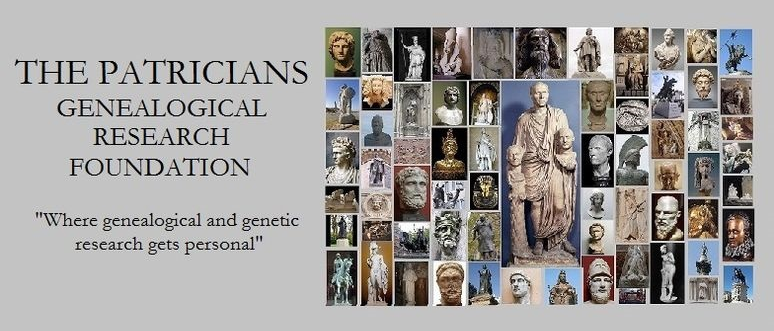

14 replies on “Christopher Columbus, a.k.a. Prince Segismundo Henrique Jogaila (before 1451 – 1506) Admiral of the Ocean Sea, Viceroy and Governor of the Indies, Corsair, Navigator, Maritime Explorer, Colonizer”
[…] Christopher Columbus, a.k.a. Prince Segismundo Jogaila (1451 – 1506) […]
LikeLike
[…] Christopher Columbus, a.k.a. Prince Segismundo Jogaila (1451 – 1506) 12-17 agnatic 42,35 […]
LikeLike
[…] Christopher Columbus, a.k.a. Prince Segismundo Jogaila (1451 – 1506) […]
LikeLike
[…] Christopher Columbus, a.k.a. Prince Segismundo Jogaila (1451 – 1506) […]
LikeLike
[…] Christopher Columbus, a.k.a. Prince Segismundo Jogaila (1451 – 1506) 12-17 agnatic 42,35 […]
LikeLike
[…] Christopher Columbus, a.k.a. Prince Segismundo Jogaila (1451 – 1506) 12-17 […]
LikeLike
[…] Christopher Columbus, a.k.a. Prince Segismundo Henrique Jogaila (before 1451 – 1506) Maritime … […]
LikeLike
[…] #9 Christopher Columbus […]
LikeLike
[…] #9 Christopher Columbus […]
LikeLike
[…] #9 Christopher Columbus […]
LikeLike
[…] #9 Christopher Columbus […]
LikeLike
[…] Christopher Columbus, a.k.a. Prince Segismundo Henrique Jogaila (before 1451 – 1506) Maritime … […]
LikeLike
[…] Earl of Orkney, explored Nova Scotia, Massachusetts, and Rhode Island almost 100 years before Christopher Columbus reached the New World in […]
LikeLike
[…] Christopher Columbus, a.k.a. Prince Segismundo Henrique Jogaila (before 1451 – 1506) Maritime … […]
LikeLike